Maya Cycles of Time
(Editors' note: Para acceder a una versión en español de este artículo, haga clic aquí. This article was originally published in Convergence in March of 2007. We are pleased to "reprint" it in Loci: Convergence in 2012.)
John Lloyd Stephens and Frederick Catherwood brought the ancient Maya to world attention in 1841 with their illustrated volumes entitled Incidents of Travels in Central America, Chiapas and Yucatan.
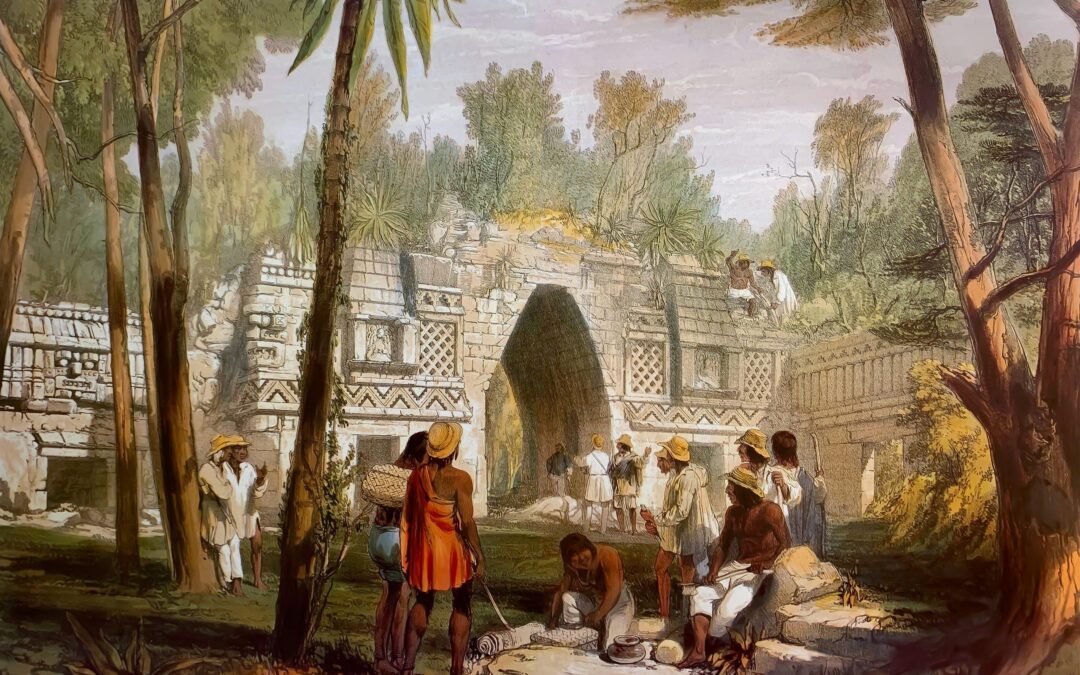
Figure 1. Maya city of Labna from Catherwood’s Views of Ancient Monuments in Central America (1844).
For some time after, though, much about this lost civilization remained shrouded in mystery. A Spanish colonial Franciscan priest, Fray Diego de Landa, had come very close to annihilating the civilization in an effort to wipe out practices he viewed as relapses into paganism. He burned every Mayan book he could find. Only four of the written records of Maya heritage survived the flames of de Landa’s infamous 1562 auto da fe. To atone, de Landa published Relacion de las cosas de Yucatan in 1566, reconstructing as much as he could of the lost heritage. Ironically, that source, written in Spanish, was a key to deciphering Mayan glyphs in later years.
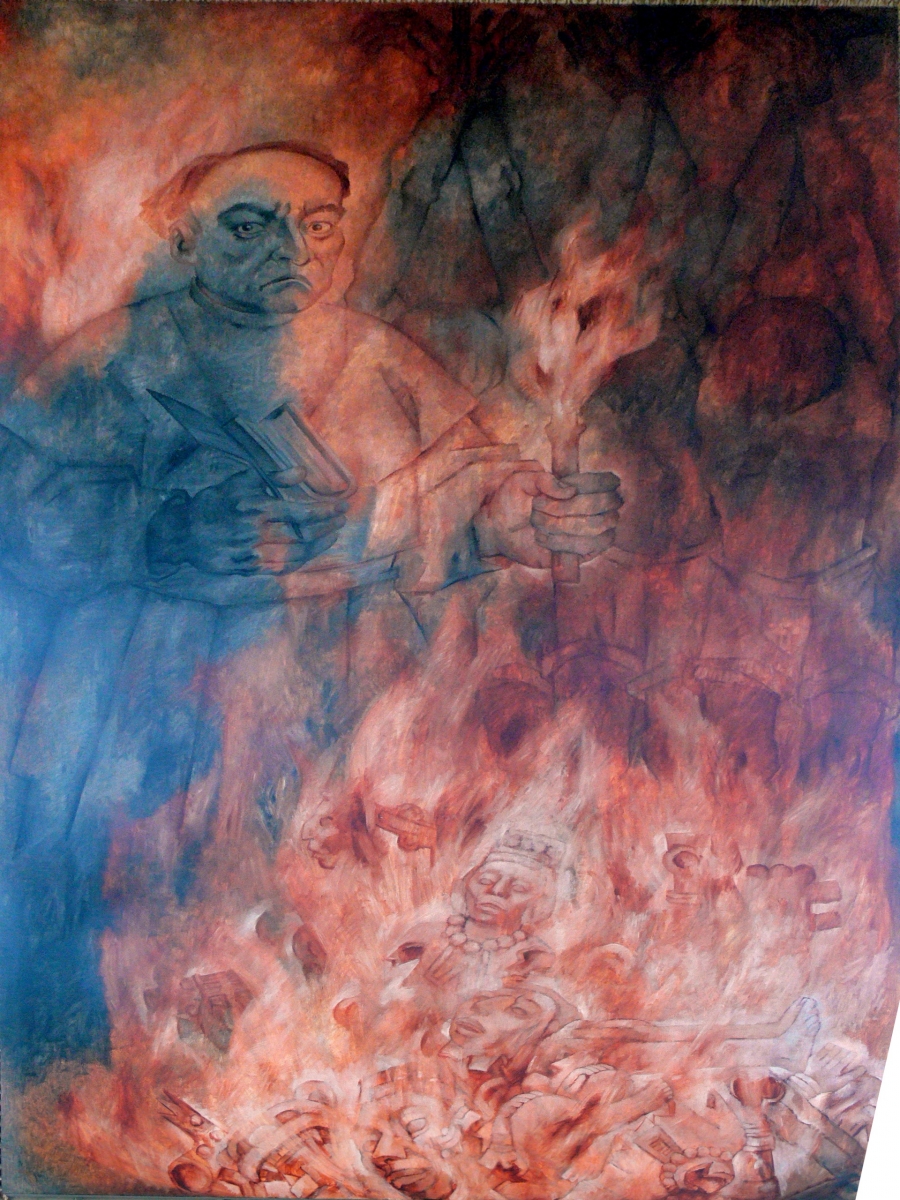
Figure 2. (Fray Diego) de Landa, Government Palace, Merida, Mexico. Wikimedia Commons.
Maya Cycles of Time: Introduction
(Editors' note: This article was originally published in Convergence in March of 2007. We are pleased to "reprint" it in Loci: Convergence in 2012.)
John Lloyd Stephens and Frederick Catherwood brought the ancient Maya to world attention in 1841 with their illustrated volumes entitled Incidents of Travels in Central America, Chiapas and Yucatan.

Figure 1. Maya city of Labna from Catherwood’s Views of Ancient Monuments in Central America (1844).
For some time after, though, much about this lost civilization remained shrouded in mystery. A Spanish colonial Franciscan priest, Fray Diego de Landa, had come very close to annihilating the civilization in an effort to wipe out practices he viewed as relapses into paganism. He burned every Mayan book he could find. Only four of the written records of Maya heritage survived the flames of de Landa’s infamous 1562 auto da fe. To atone, de Landa published Relacion de las cosas de Yucatan in 1566, reconstructing as much as he could of the lost heritage. Ironically, that source, written in Spanish, was a key to deciphering Mayan glyphs in later years.

Figure 2. (Fray Diego) de Landa, Government Palace, Merida, Mexico. Wikimedia Commons.
Maya Cycles of Time: Maya Number System
The Maya left evidence of a highly developed understanding of arithmetic, calendars, and astronomy, which was certainly as sophisticated as contemporary civilizations elsewhere in the world. By the end of the Late Pre-Classic Maya time period (400 BCE–100 CE), they were using a positional number system which employed only three symbols: a figure resembling a cowry shell representing 0, a dot for 1, and a horizontal bar for five. The number 0 appeared as:

and the numbers 1 to 19 inclusive appeared as:


Numbers larger than 19 were written vertically, employing a vigesimal (base 20) system. For example, the numbers 43, 354, and 220 were written as follows.

The concept of a zero placeholder first occurred among the Olmec, the mother of all Mesoamerican civilizations. By contrast, an ancient Middle Eastern civilization, the Babylonians employed two symbols in a sexagesimal (base 60) system. Without a zero placeholder, though, they did not have the means to make a distinction, the way we do, between numbers such as 6 and 60 (or, in their case, 6 and 6 x 60 = 360). They used, instead, the relative size and spacing of symbols as well as the context to deal with such ambiguities.
The Maya used a modified or quasi-vigesimal number system, in which the value of the third place was 360 instead of 400, for calendric purposes.

Some authors claim that the Maya employed a pure vigesimal system for non-calendric purposes; however, all extant evidence of large numbers relates to the calendar.
Maya Cycles of Time: Maya Calendrics
Like all Mesoamerican cultures, the Maya employed a 260-day year called the Tzolkin or sacred almanac. Dates consisted of pairings of two cycles, one cycle of 13 day numbers with another of 20 day names.

In this almanac, the day 1 Imix is followed by 2 Ik, 3 Akbal, and so on, passing through 260 unique pairs of day numbers and names illustrated by interlocking wheels.

Figure 3. Tzolkin calendar. David Pratt.
The Maya also used the standard Mesoamerican 365-day Haab, or vague year, composed of eighteen months of 20 days, numbered zero through nineteen, and closing with the 5-day month of Uayeb.

The Haab roughly approximates a solar (or tropical) year and the Maya recorded an accurate account of the discrepancy. Great observers of the cycles of time, they noted that a 365-day year precessed through all the seasons twice in 1,101,600 days (a number that will become significant later). Thus, the true length of a year, \(n,\) satisfies \[\frac{1101600}{365} = \frac{1101600}{n} + 2,\] so that \(n=365.242036\) days, which is slightly more accurate than our Gregorian calendar.
A Calendar Round combined the 260-day Tzolkin and 365-day Haab year in ancient Mesoamerica. As the least common multiple of 260 and 365 is 52 x 365, the Calendar Round was comprised of 52 Haab years. Thus a typical Calendar Round date referenced both the Tzolkin and Haab positions. For example, the date 11 Akbal 16 Ceh would look like

in Mayan glyphs with the number glyphs rotated from horizontal to vertical. The Calendar Round can be illustrated by interlocking wheels as shown in Figure 4, with the two wheels on the left illustrating the Tzolkin calendar and the partially visible wheel on the right the Haab calendar.

Figure 4. Calendar Round. David Pratt.
Only four of the twenty Tzolkin day names could possibly align with the first position of any month of the 365-day haab year. This is because the sequence of 20 distinct day names and 20-day months align exactly save for the final 5-day month of Uayeb. This misalignment shifts the day name of the start of each successive year by 5. Thus, in any given year, each Haab month begins on the same Tzolkin day. Then in the subsequent year, each month begins 5 days later. In the Classic Era (200–900 CE) these were the days named Akbal, Lamat, Ben, and Etz’nab, and were known as year-bearers. By the time of the Spanish Conquest, the year-bearers had inexplicably been shifted forward by one day. In any case, the four year-bearer day names together with the day numbers 1–13 made up the 52 distinct Tzolkin days beginning each month of a 365-day Haab year of a Calendar Round.
Maya Cycles of Time: The Long Count
The Maya developed the practice of using time periods even longer than the 18,980-day Calendar Round believed to have been invented originally by the Olmec. For the Maya, the basic unit of time, a day, was called a kin. In the second order, 20 kins made up a uinal. In a vigesimal system the third order would be 20 uinals but, instead, 18 uinals made up a tun. Thus a tun was 360 kin (days). Time keeping units then returned to factors of 20 moving up to each successive level. In this way the Maya recorded references to vast spans of time in their effort to tie current events to their past history and folklore.
The table below shows the five levels used to record significant dates in the Maya Classic Era (200–900 CE).

The Maya are often credited as the first people to establish a chronological record of dates beginning with a fixed day in the distant past from which to number each day uniquely. They identified the beginning of recorded time as the date when they believed the world last came to an end and was recreated anew. They believed this occurred at the close of a Great Cycle of 13 baktuns (1,872,000 Kins). Thus their “chronological count,” called the Long Count, is really another cycle, this one of 5,128 years. The end of the current Great Cycle is approaching soon, due on the Winter Solstice, December 21, 2012. (Editors’ note: We remind readers that this article was published in 2007, when 2012 was still in the future.)
Mayanists recognize that early Mesoamerican astronomers may have created the Long Count by targeting this particular end date. It is a date that has special meaning in Maya cosmology and, perhaps not coincidently, is also related to the movement of equinoxes relative to other heavenly bodies. After all, the precession of the equinoxes was known to many ancient Old World cultures, including the Egyptians and Greeks. In 2012 there will be a unique conjunction of the Winter Solstice sun with the crossing point of the Galactic Equator and the ecliptic.
A Mayan date begins with a Long Count, which consists of number and time period symbols arranged vertically in carvings called stelae and in books called codices. Figure 5 shows Tikal Stela 29, which records the Long Count date
8 baktun 12 katun 14 tun 15 uinal 0 kin.
Mayanists write this date as 8.12.14.15.0 using a shorthand notation called the Goodman notation. The date probably corresponds to July 8, 292 CE.
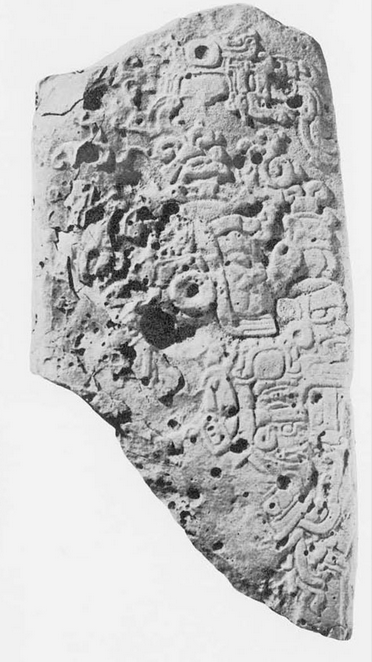
Figure 5. Tikal Stela 29 records the Long Count date 8.12.14.15.0. Penn Museum.
The beginning of the current Great Cycle was written not as 0.0.0.0.0, but rather as
13.0.0.0.0 4 Ahau 8 Cumku.
See this date on the sketch of Quirigua Stela C in Figure 6.

Figure 6. Sketch of Quirigua Stela C. Wikimedia Commons.
The 13 in this date refers to the number of baktuns and each successive 0 refers to katun, tun, uinal and kin values, respectively. The Ahau and Cumku numbers correspond to the Tzolkin and Haab dates.
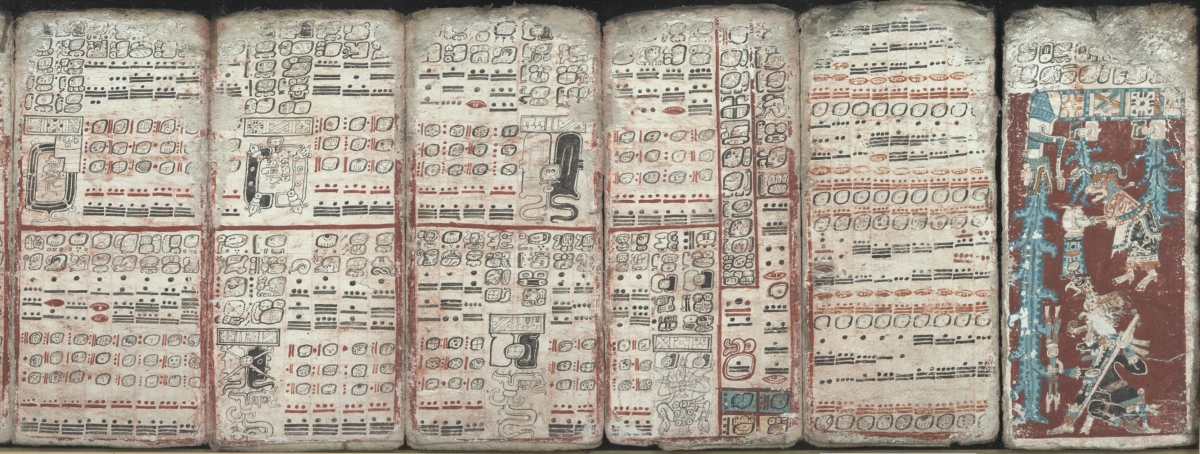
Figure 7. Sheets 55–59, 74 of the Dresden Codex. Wikimedia Commons.
During the Classic period the Maya placed their lunar series glyphs between those of the Tzolkin and Haab dates, demonstrating a clear grasp of the moon’s changing appearance in the sky. They found that 4,400 days equaled 149 moons, corresponding to a lunation value of 29.53020 days. In the Dresden Codex they laid out the number of days between 405 consecutive lunations, cleverly interpolating lengths of 29 and 30 so that the actual discrepancy in the appearance of a new moon was no more than one day.
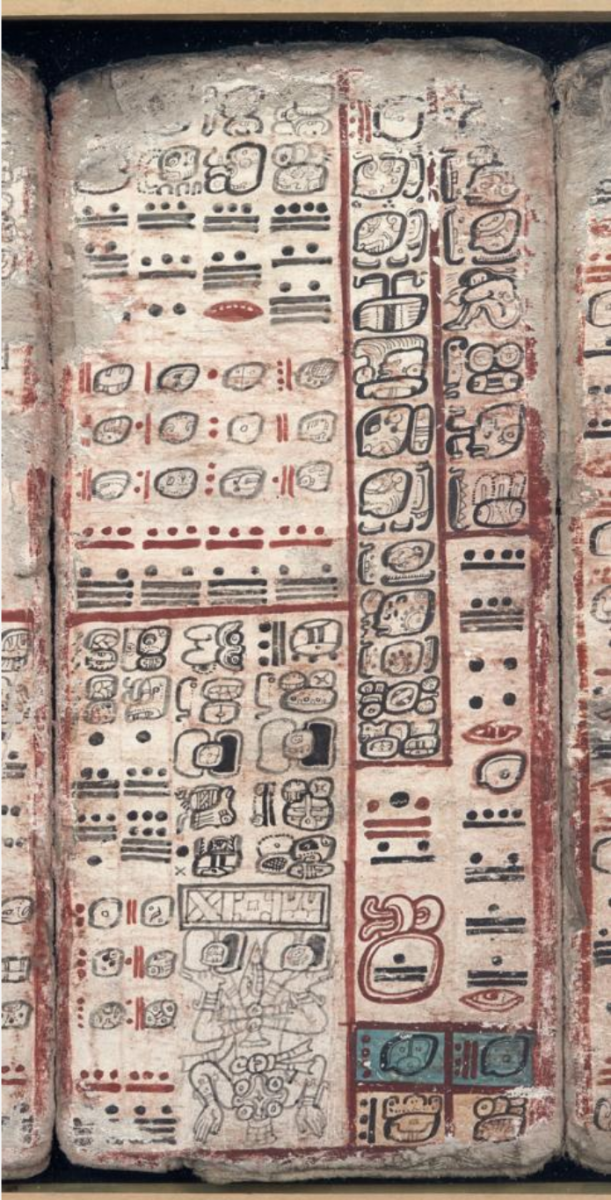
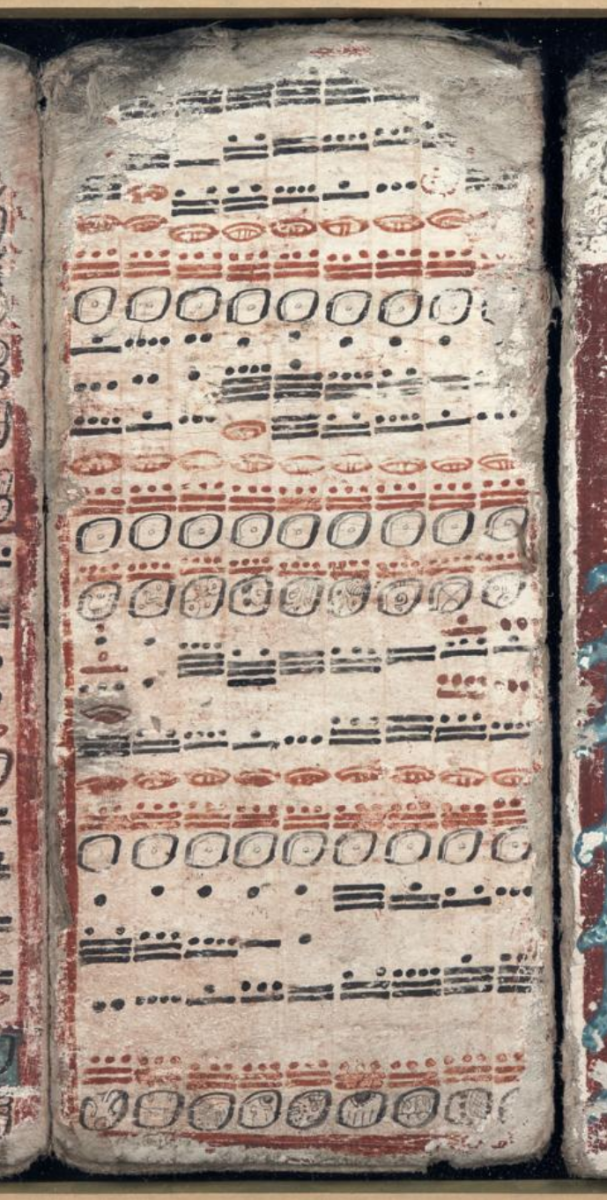
Figure 8. Pages from the Dresden Codex showing the Long Count. Library of Congress.
Returning to the Maya computation of the length of a solar year and the significance of 1,101,600 days, the Maya observed that in the year 7.13.0.0.0, Midwinter Day, or the Winter Solstice, occurred on 0 Yaxkin for the second time since the recreation of the world in year 13.0.0.0.0. This is 1,101,600 days after the beginning of the current Long Count, which, again, they denoted as 13.0.0.0.0 or 13 baktuns and which probably occurred in Gregorian year 3114 BCE.
Maya Cycles of Time: Later Dating Schemes
In the Late Classic era, Long Count dating passed out of use in favor of an abbreviated system for commemorating the end of a katun or 7,200-day period. A Long Count katun-ending date of
9.16.0.0.0 2 Ahau 13 Tzec
was reduced to
Katun 16 2 Ahau 13 Tzec.
The loss of specificity is not as great as it seems because of the redundancy inherent in the dating system. A given period-ending date is exact within a cycle of nearly 19,000 years, a time period well in excess of the 13-baktun Great Cycle of 5,128 years.
Unfortunately, by the Late Post Classic (900–1500 CE) era, well before the arrival of the Spanish, another abbreviation for katun endings reduced the accuracy to within the much smaller period of 260 years. This method, dubbed the Short Count, suppressed all katun-ending references except the Tzolkin day. The katun-ending date above,
9.16.0.0.0 2 Ahau 13 Tzec,
was reduced to
Katun 2 Ahau.
It is indistinguishable from
10.9.0.0.0 2 Ahau 13 Mac,
some 256 Gregorian years later.
The table below shows how a particular date might appear. Note the variation in codex and stela glyph style. There is significant variation in styles among various archeological sites and even on the same site at different times. This makes general decipherment particularly challenging.
9.16.0.0.0 2 Ahau 13 Tzec

Katuns must end on an Ahau day because the first katun did and each Ahau day reoccurs every 20 days. The 13 day numbers, however, are not sequential for katun endings. The length of a katun in days, 7,200, is 11 or –2 (mod 13). Thus successive katun-ending Ahau days are 13 Ahau, 11 Ahau, . . ., 1 Ahau, 12 Ahau, 10 Ahau, . . . These dates, arranged in a wheel, constituted the prevailing calendar at the time of the Spanish Conquest. In Figure 9 is de Landa’s version of the Maya calendar.
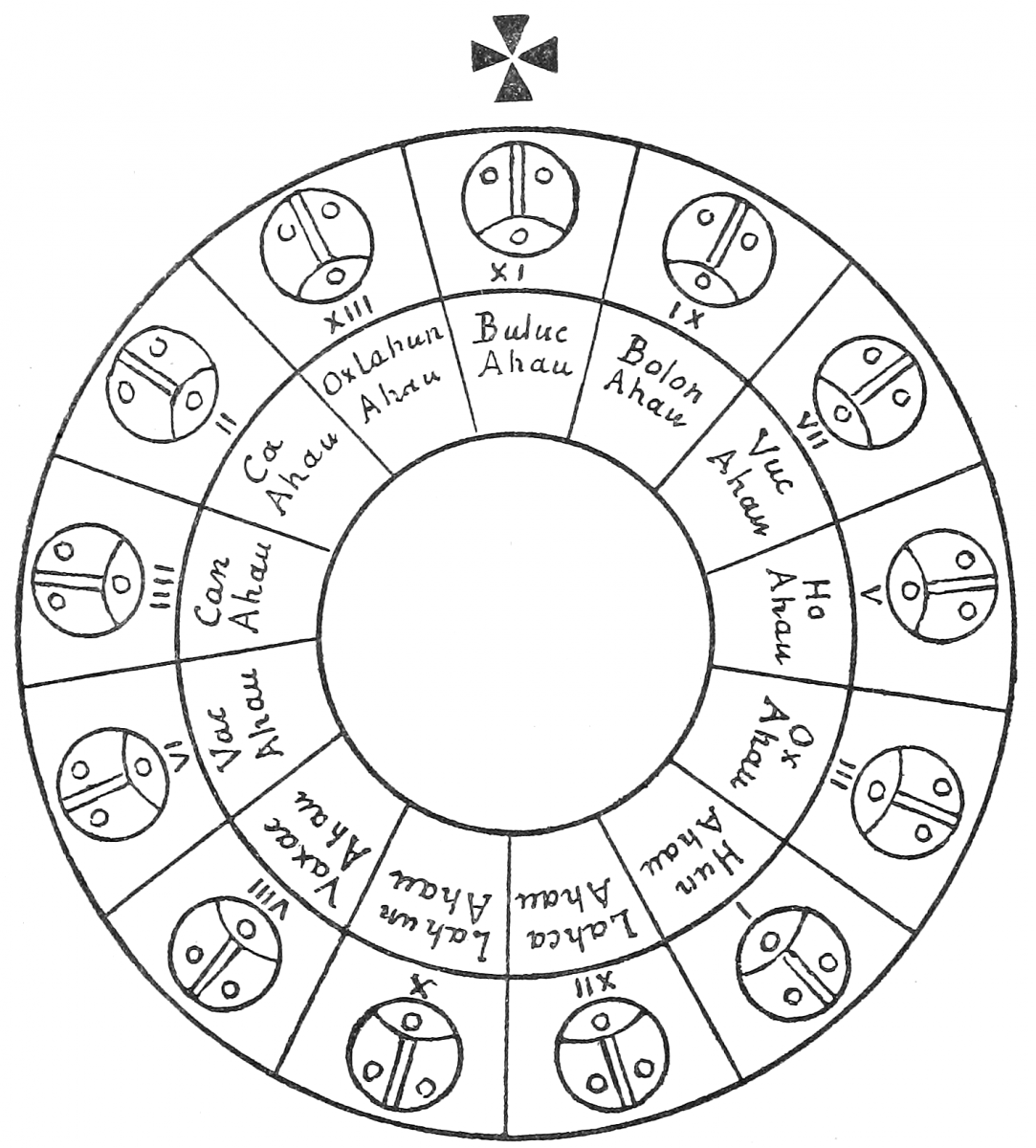
Figure 9. De Landa's sketch of the Round of the Katuns. Wikimedia Commons.
The Short Count is a major reason for the unresolved problem of correlating the Maya and European calendars. Short Count dates are correlated to European dates; the problem is correlating prevailing Short Count with ancient Long Count dates. The generally accepted correlation places the Long Count katun ending of
11.16.0.0.0 13 Ahau 8 Xul
on the Gregorian date of November 12, 1539.
Maya Cycles of Time: Further Explorations
All of these calculations can be confirmed using online Maya calendar converters that translate Classical Maya Long Counts into Western Gregorian calendar dates and vice versa. Want to explore further? Try these exercises:
- Create a glyph Long Count of your birthday or other significant date(s).
- Determine which days in the Tzolkin calendar could begin any Haab new year.
- How did the Maya arrive at 1,101,600 days in the computation of the true length of the solar year?
- If the Short Count date 13 Ahau is not 11.16.0.0.0, are there other possible katun-ending Long Counts in the same baktun? What would be the corresponding Gregorian date(s)?
- Explain why period-ending dates have a cycle of 18,980 Haab years, more than triple a Great Cycle of 13 baktuns.
Other Convergence articles about Maya numbers, Maya geometry, and Maya calendars:
- Maya Calendar Conversions, by Ximena Catepillán and Waclaw Szymanski
- When a Number System Loses Uniqueness: The Case of the Maya, by Amy Shell-Gellasch and Pedro Freitas
- Maya Geometry in the Classroom, by John Diamantopoulos and Cynthia (Woodburn) Huffman
Maya Cycles of Time: References and Related Readings
Coe, Michael D. 1999. The Maya. 5th ed. London: Thames and Hudson Ltd.
Coe, Michael D. 1999. Breaking the Maya Code. 2nd ed. London: Thames and Hudson Ltd.
de Landa, Friar Diego. 1978. Yucatan Before and After the Conquest. Translated by William Gates. New York: Dover Publications, Inc.
Diamond, Jared. “The Maya Collapses.” In Collapse: How Societies Choose to Fail or Succeed, 157–177. New York: Viking, 2005.
Kaplan, Robert. 1999. The Nothing That Is: A Natural History of Zero. New York: Oxford University Press.
Miller, Mary Ellen. 1999. Maya Art and Architecture. London: Thames & Hudson.
Schele, Linda, and Peter Mathews. The Code of the Kings. New York: William Morrow, 1998.
Schele, Linda, and David Freidel. 1990. A Forest of the Kings: The Untold Story of the Ancient Maya. New York: Quill William Morrow.
Shafer, Robert J. 1994. The Ancient Maya. 5th ed. Palo Alto, California: Stanford University Press.
Stephens, John L. 1969. Incidents of Travel in Central America, Chiapas and Yucatan, Vol. I & II. Edited and illustrated by Frederick Catherwood. New York: Dover Publications, Inc.
Other Convergence articles about Maya numbers, Maya geometry, and Maya calendars:
- Maya Calendar Conversions, by Ximena Catepillan and Waclaw Szymanski
- When a Number System Loses Uniqueness: The Case of the Maya, by Amy Shell-Gellasch and Pedro Freitas
- Maya Geometry in the Classroom, by John Diamantopoulos and Cynthia (Woodburn) Huffman
For more information on Maya codices, see Convergence’s Mathematical Treasure, “Codex Mexicanus of the Maya.”